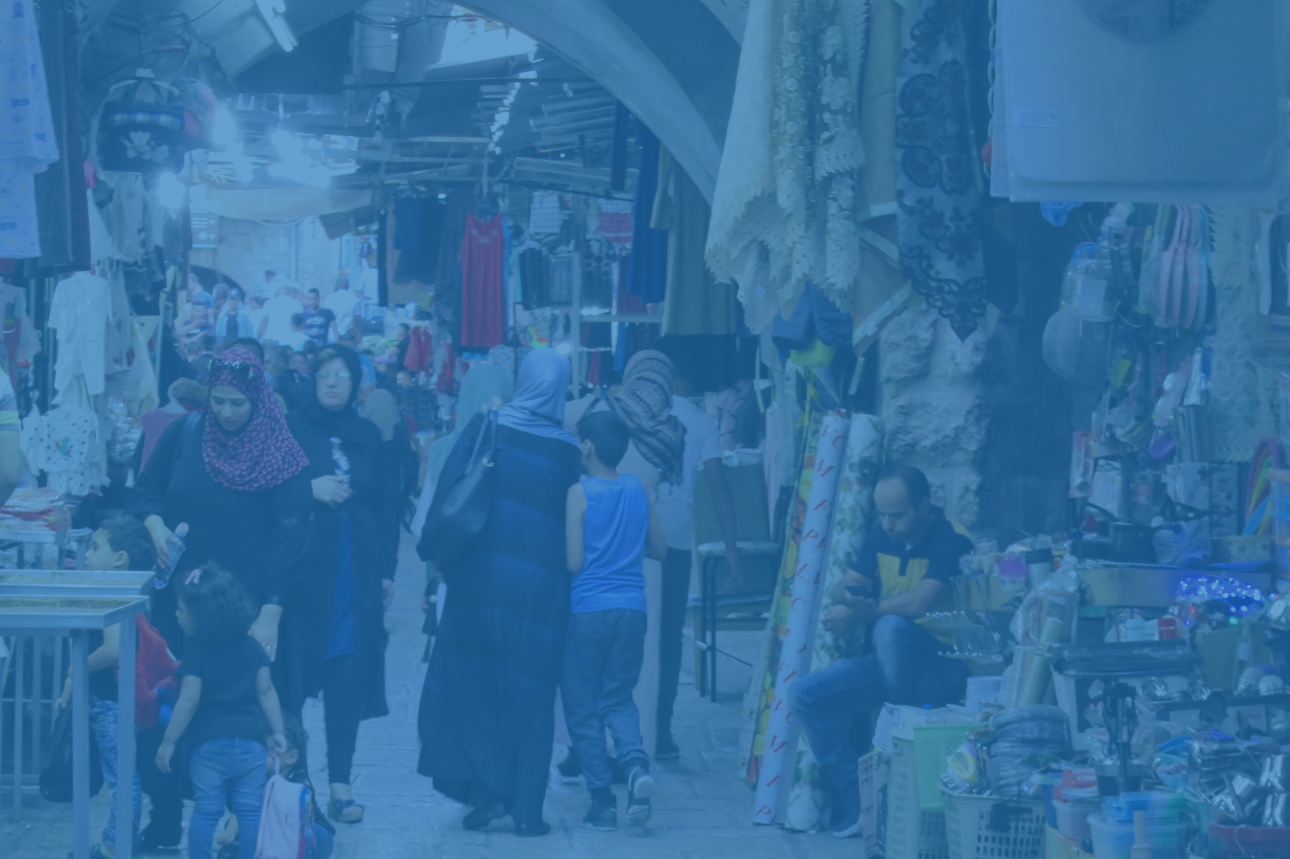Employment and Wages
Chapter 3
Rates of participation in the labor force among Arab Israelis are far lower than among Jews. According to CBS data for 2022, 60.6% of Arab men participate in the labor force, compared with 67.7% of Jewish men. The gap is even wider among women: Only a third of Arab women (33.7%) participate in the labor force, compared with 65.8% of Jewish women. The unemployment rate among Arabs (5.5%) is slightly higher than the equivalent rate among Jews (3.5%). The labor force participation rate of Arab men rose significantly in 2022 relative to 2021, due to the recovery of the Arab labor market from the effects of the COVID-19 crisis, and it has returned to the levels seen before the outbreak of the pandemic.
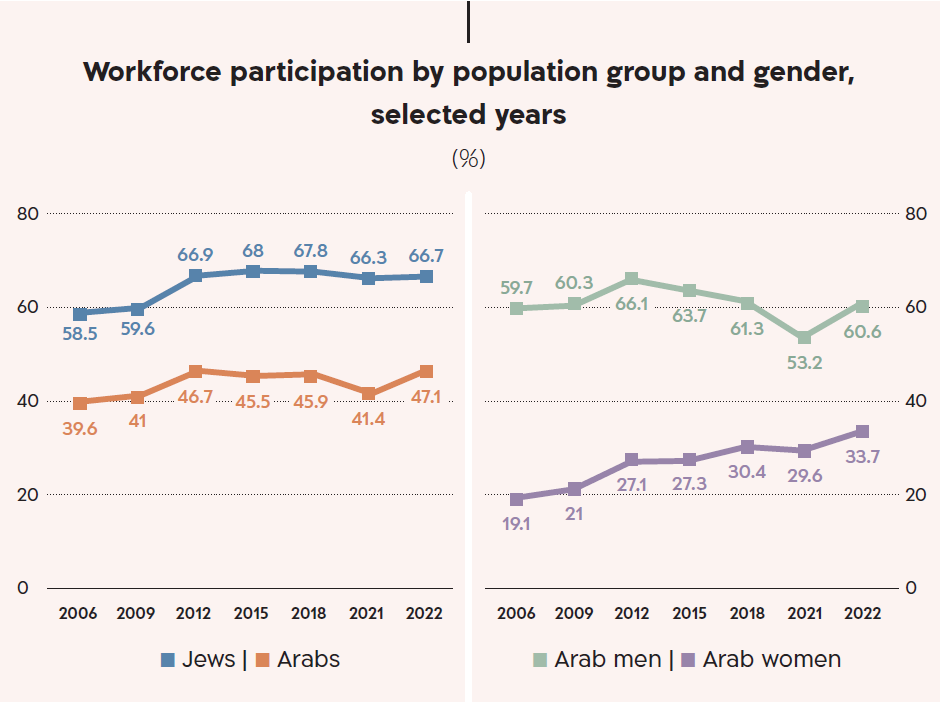
Arab employees are highly concentrated in specific economic sectors (such as construction for men and education for women), while the Jewish workforce is more diverse. Furthermore, the Arab workforce is concentrated in economic sectors with lower wages than those in economic sectors in which Jews are predominant.
According to National Insurance Institute (NII) data, the average wage of a salaried employee in a Jewish locality (NIS 14,035) is more than 50% higher than the average wage of a salaried employee in an Arab locality, which stands at just NIS 8,973 (2021 data, updated to the end of 2023).
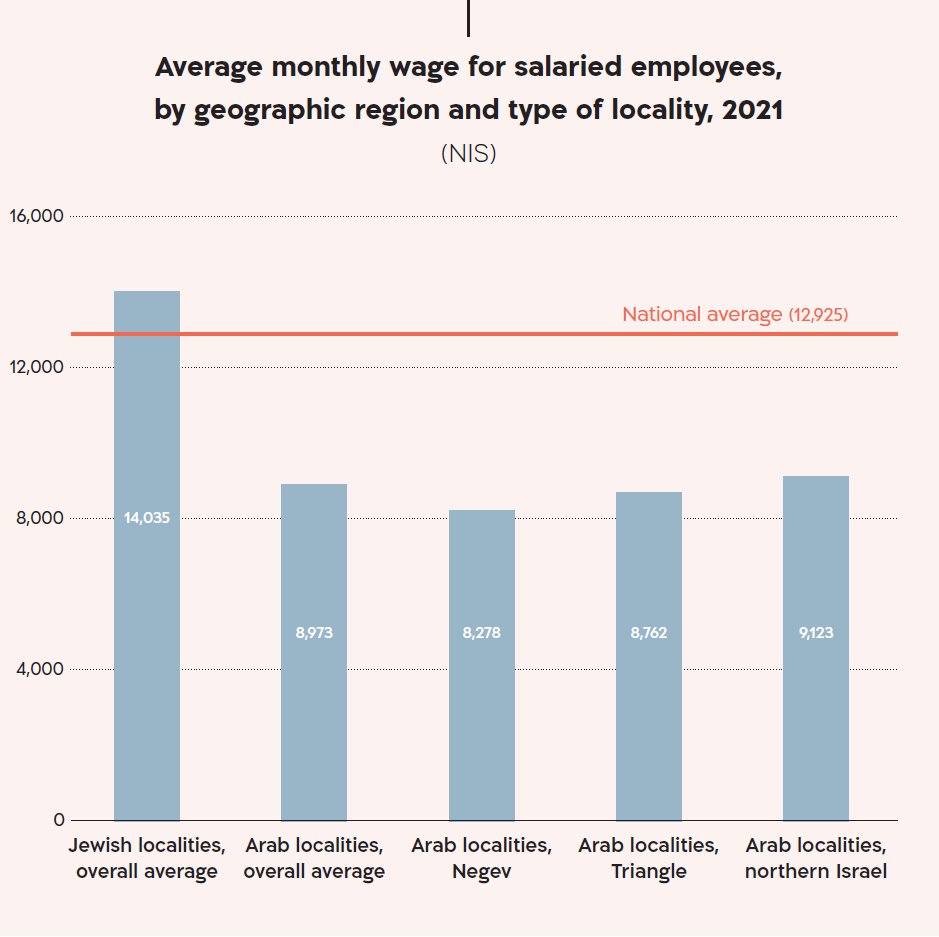

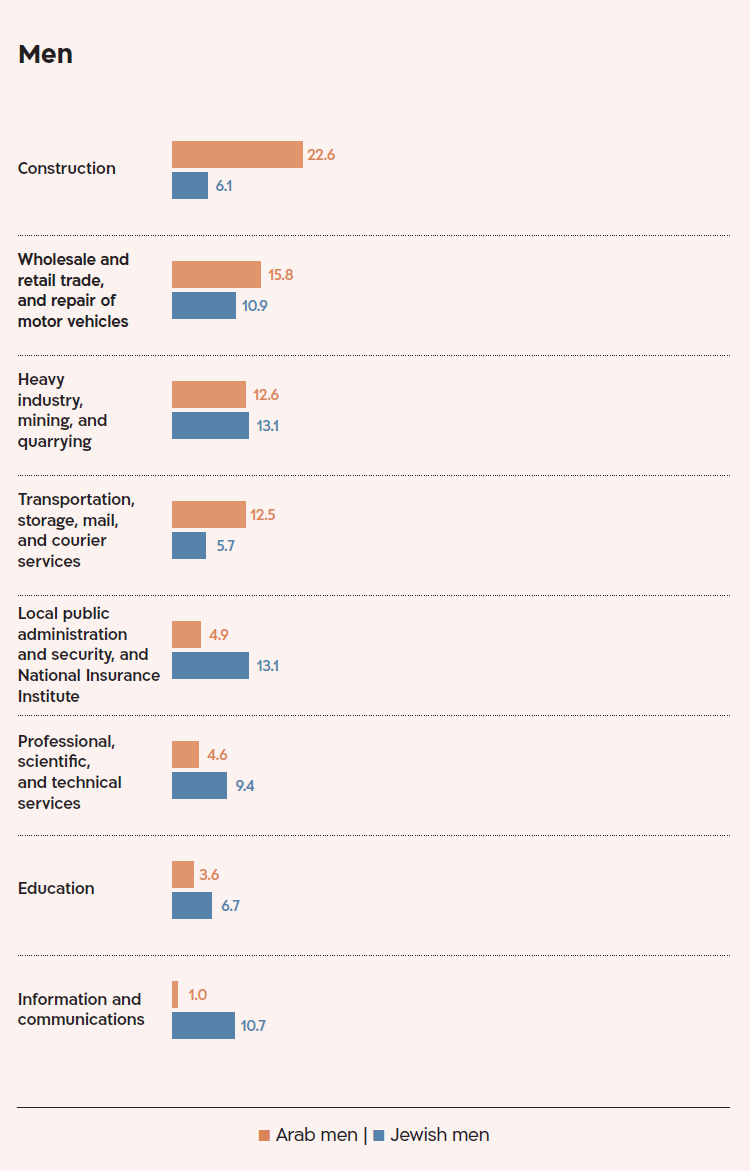
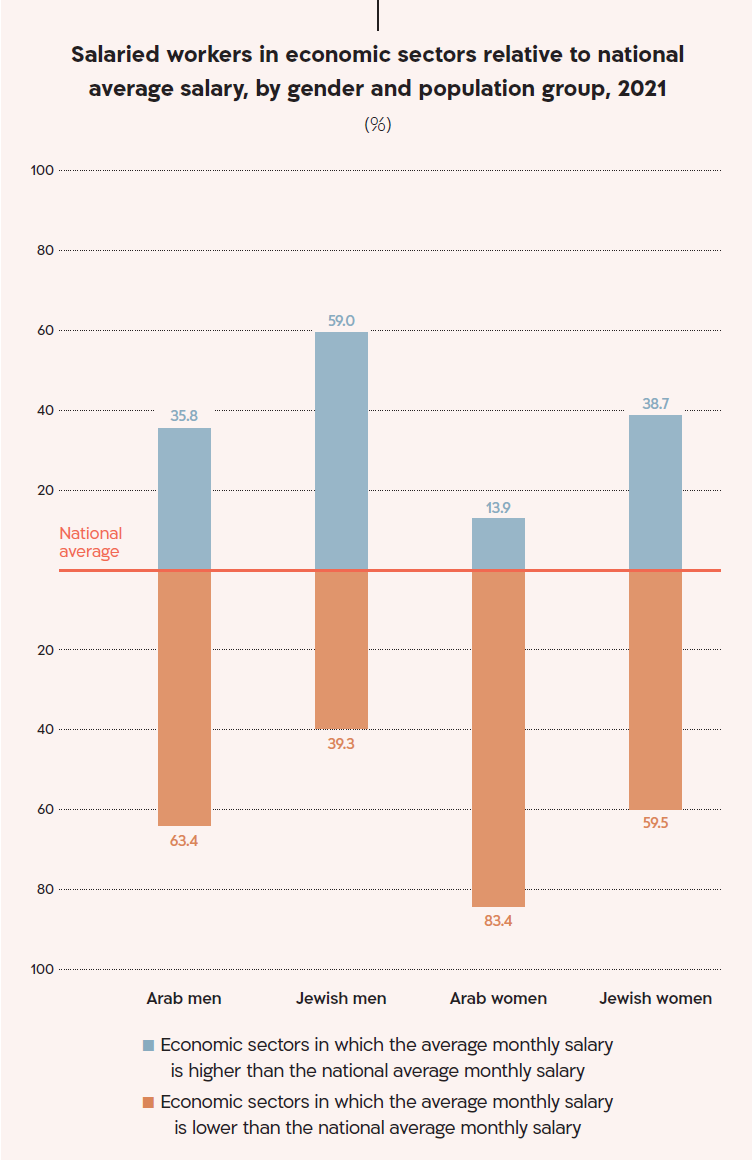
According to data from 2022, 38% of Arab young adults, ages 18–24 are classified as NEETs (not in employment, education, or vocational training). This percentage remains almost unchanged in the next age group up (25–34). By comparison, only 15.2% of Jews in the 18–24 age group are classified as NEETs, and this percentage drops among Jews aged 24–35 as they integrate into the workforce.
The percentage of Arab men who are employed is almost double that among Arab women, and the percentage of Arab women classified as NEETs in all age groups is considerable higher than the equivalent percentage among of Arab men.










